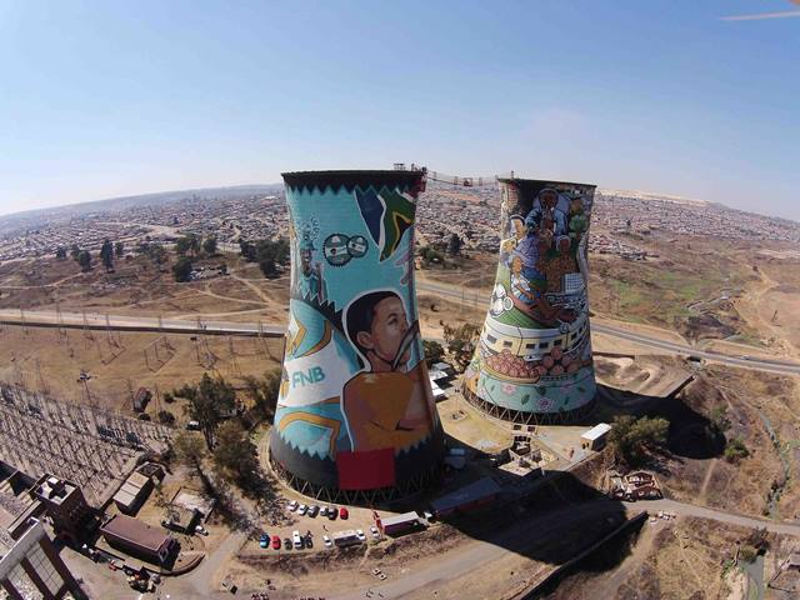Johannesburg North Attractions - The Facts
Johannesburg North Attractions - The Facts
Blog Article
The Basic Principles Of Johannesburg North Attractions
Table of ContentsUnknown Facts About Johannesburg North AttractionsThe 9-Minute Rule for Johannesburg North AttractionsThe Buzz on Johannesburg North AttractionsSome Known Incorrect Statements About Johannesburg North Attractions The Single Strategy To Use For Johannesburg North AttractionsHow Johannesburg North Attractions can Save You Time, Stress, and Money.
The city owes its place to the existence of a much more priceless resource: gold. The city grew on the side of the Witwatersrand Key Coral reef, a below ground stratum of gold-bearing quartz-silica conglomerate that arcs for thousands of miles under the Highveld. Many of the gold mines in the city discontinued procedure in the 1970s, yet in its day the Witwatersrand gold market represented more than 40 percent of the globe's yearly gold manufacturing.Johannesburg has a temperate climate. Summer temperatures average regarding 75 F (24 C); winter season temperature levels balance regarding 55 F (13 C) and only sometimes dip below cold. The city delights in concerning eight hours of sunshine daily in both winter season and summertime. Rain averages about 28 inches (700 millimetres) per year, yet the overall varies significantly from year to year.
What rain the city obtains falls nearly specifically in the summer months, often in amazing late-afternoon electrical tornados., where lots of homeowners still count on coal for fuel.

What Does Johannesburg North Attractions Mean?
The equilibrium of the city is inhabited by whites. Holiday accommodation differs in character and quality.
Physical development, although somewhat restricted by transportation, proceeded swiftly as migration to South Africa, and Johannesburg in particular, boosted dramatically.
Most inadequate suburbs were mixed, with bad blacks and whites living together, although the rich suburban areas were usually reserved for whites.
The previous system of eleven phoned number areas was reorganised in 2006. Marshalltown, as seen from the top of the Carlton Centre. The M1 and M2 run behind the click to find out more buildings, and the southern suburban areas extend past the freeway boundary. The central city of Johannesburg lies within the city's Area F. The number of individuals living in the internal city on a casual basis is unidentified, as several are unlawful immigrants. The unemployment, education and learning, and age profiles of the location are all unidentified, due to the difficulty of acquiring reliable info about the location.
The 8-Second Trick For Johannesburg North Attractions
Yeoville and Bellevue have a mix of apartment buildings and single property systems on small lots. The area is situated on a mountainous divide that ranges from east to west. One of the most obvious geographic attribute is Observatory Ridge, which is named for the huge observatory located on it. The entertainment areas are no more used, because of security troubles.

The smart Trick of Johannesburg North Attractions That Nobody is Discussing
The pop over to this web-site eastern suburbs are some of the earliest areas of Johannesburg, there are large areas of Jewish and other European backgrounds, the majority of the population is English talking. There are 3 golf programs as well as a number of secured ridges with viewsites.
Initially built to house male migrant employees, lots of have been improved as houses for pairs and family members. The residential area was not historically permitted to create work centres within the location, so nearly all of its citizens are commuters to various other components of the city.
The Johannesburg North Attractions PDFs
The N1 Western Bypass connects the north suburbs with the north-western suburban areas. The suburbs in the north suburbs are mostly formal, without any significant locations of informal housing, or housing that does not have a long-term structure. Although this is a well established location, there is a trend of land usage change from domestic to industrial, specifically along major arterial roads and around recognized nodes.
The area is well linked to roadway networks, specifically along the north-south axis developed by the M1 and N1. Roads to the Look At This east and west are much less well established, as there are no freeways taking a trip in that instructions. Towards the northern boundary of the city, the density of growth decreases, leaving huge areas of primitive land around Midrand.
Johannesburg North Attractions Can Be Fun For Anyone
, which is situated on a hill neglecting the inner city and Hillbrow.
Report this page